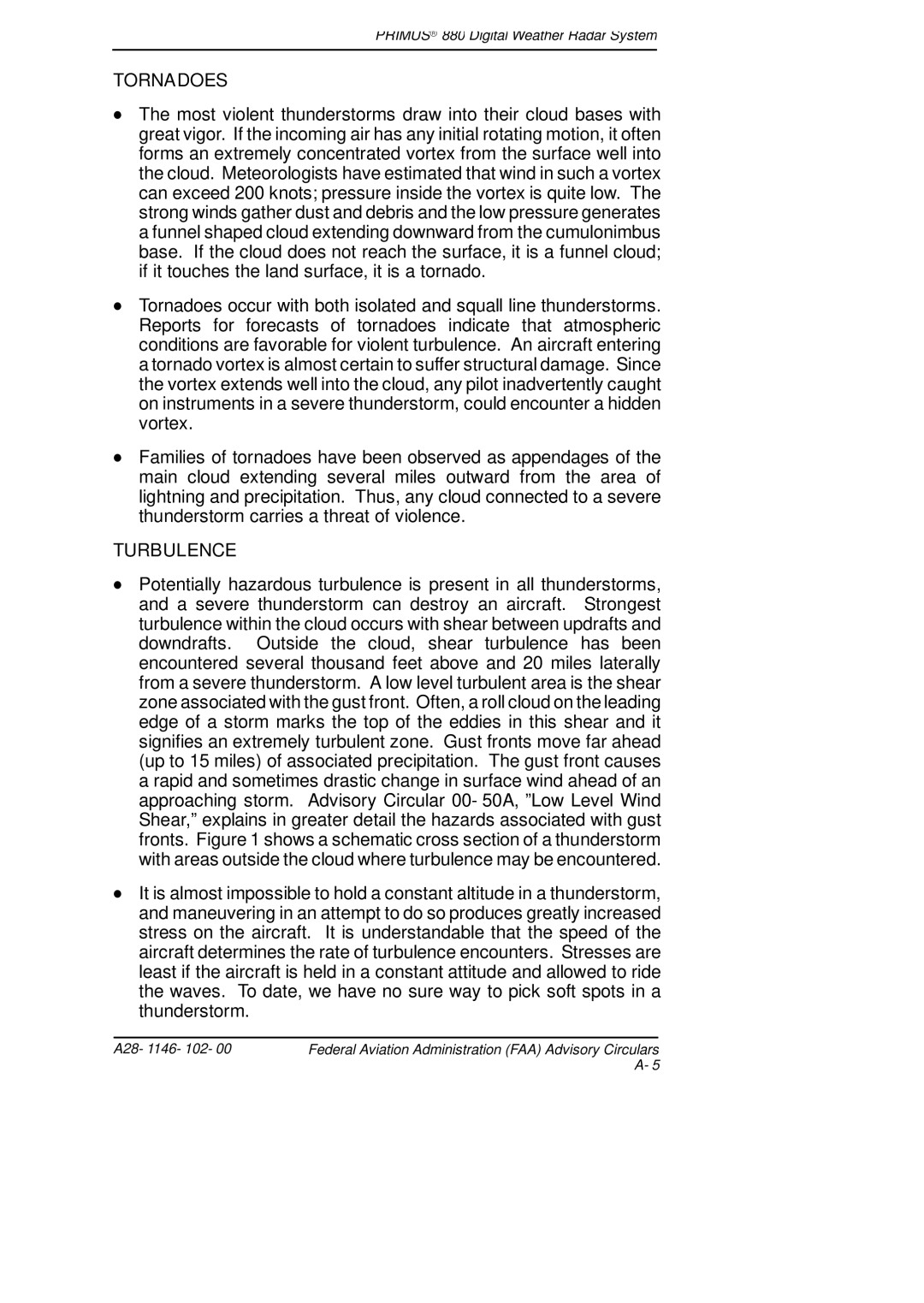
PRIMUSr 880 Digital Weather Radar System
TORNADOES
DThe most violent thunderstorms draw into their cloud bases with great vigor. If the incoming air has any initial rotating motion, it often forms an extremely concentrated vortex from the surface well into the cloud. Meteorologists have estimated that wind in such a vortex can exceed 200 knots; pressure inside the vortex is quite low. The strong winds gather dust and debris and the low pressure generates a funnel shaped cloud extending downward from the cumulonimbus base. If the cloud does not reach the surface, it is a funnel cloud; if it touches the land surface, it is a tornado.
DTornadoes occur with both isolated and squall line thunderstorms. Reports for forecasts of tornadoes indicate that atmospheric conditions are favorable for violent turbulence. An aircraft entering a tornado vortex is almost certain to suffer structural damage. Since the vortex extends well into the cloud, any pilot inadvertently caught on instruments in a severe thunderstorm, could encounter a hidden vortex.
DFamilies of tornadoes have been observed as appendages of the main cloud extending several miles outward from the area of lightning and precipitation. Thus, any cloud connected to a severe thunderstorm carries a threat of violence.
TURBULENCE
DPotentially hazardous turbulence is present in all thunderstorms, and a severe thunderstorm can destroy an aircraft. Strongest turbulence within the cloud occurs with shear between updrafts and downdrafts. Outside the cloud, shear turbulence has been encountered several thousand feet above and 20 miles laterally from a severe thunderstorm. A low level turbulent area is the shear zone associated with the gust front. Often, a roll cloud on the leading edge of a storm marks the top of the eddies in this shear and it signifies an extremely turbulent zone. Gust fronts move far ahead (up to 15 miles) of associated precipitation. The gust front causes a rapid and sometimes drastic change in surface wind ahead of an approaching storm. Advisory Circular 00- 50A, ”Low Level Wind Shear,”explains in greater detail the hazards associated with gust fronts. Figure 1 shows a schematic cross section of a thunderstorm with areas outside the cloud where turbulence may be encountered.
DIt is almost impossible to hold a constant altitude in a thunderstorm, and maneuvering in an attempt to do so produces greatly increased stress on the aircraft. It is understandable that the speed of the aircraft determines the rate of turbulence encounters. Stresses are least if the aircraft is held in a constant attitude and allowed to ride the waves. To date, we have no sure way to pick soft spots in a thunderstorm.
A28- 1146- 102- 00 | Federal Aviation Administration (FAA) Advisory Circulars |
| A- 5 |
